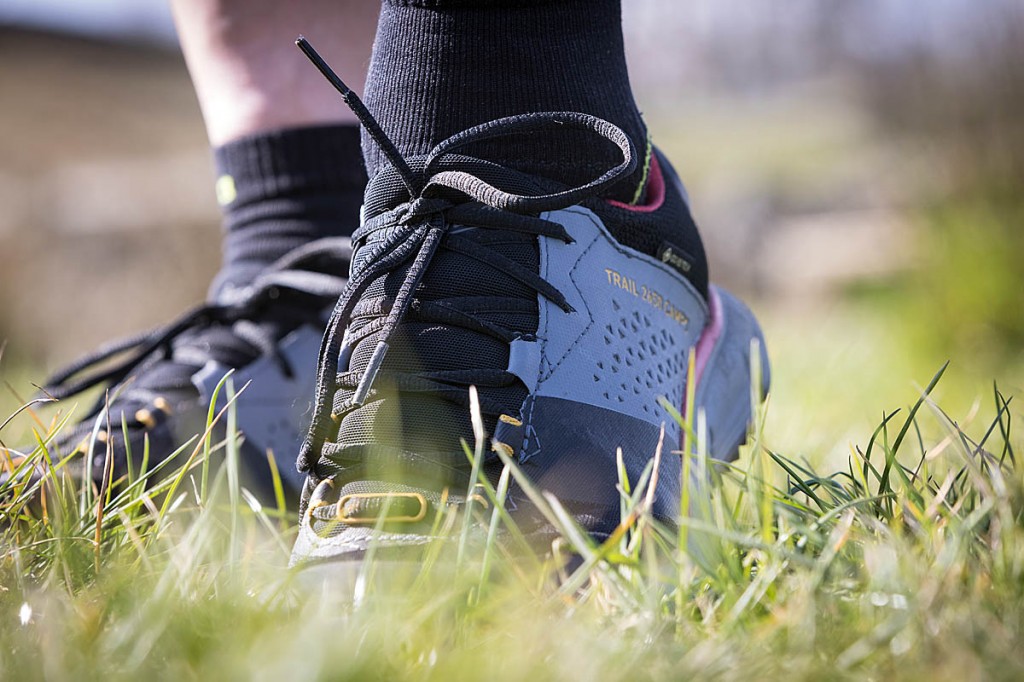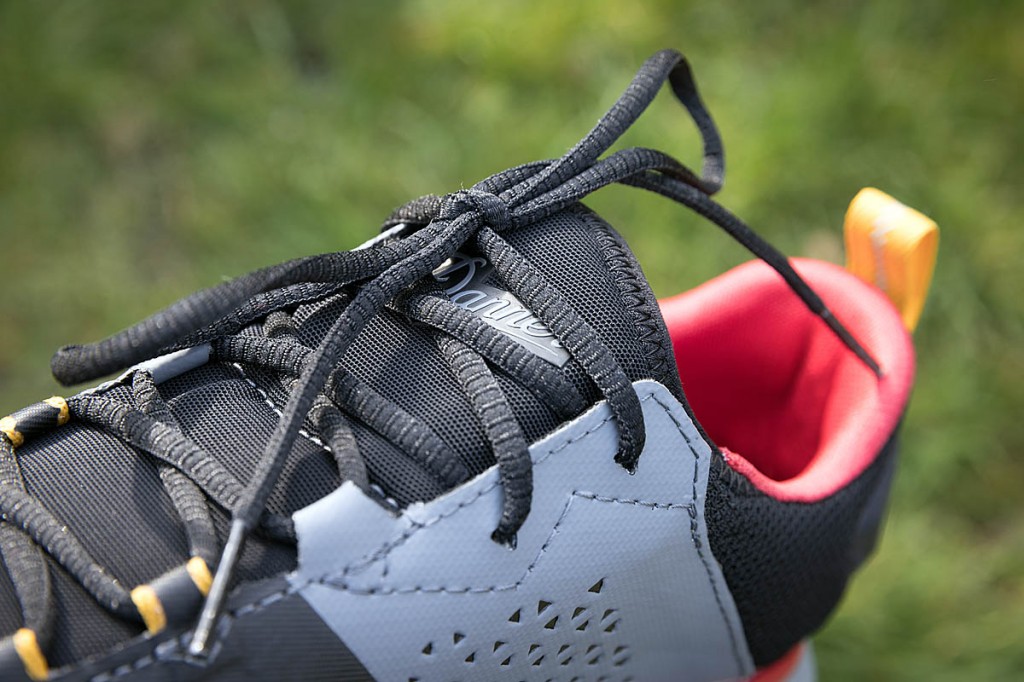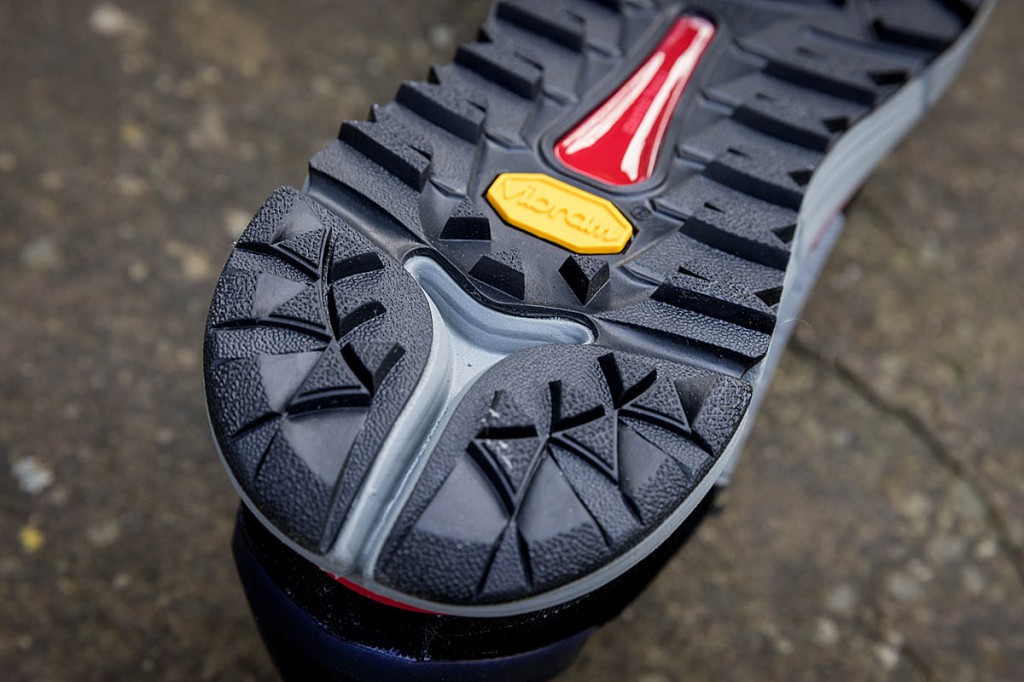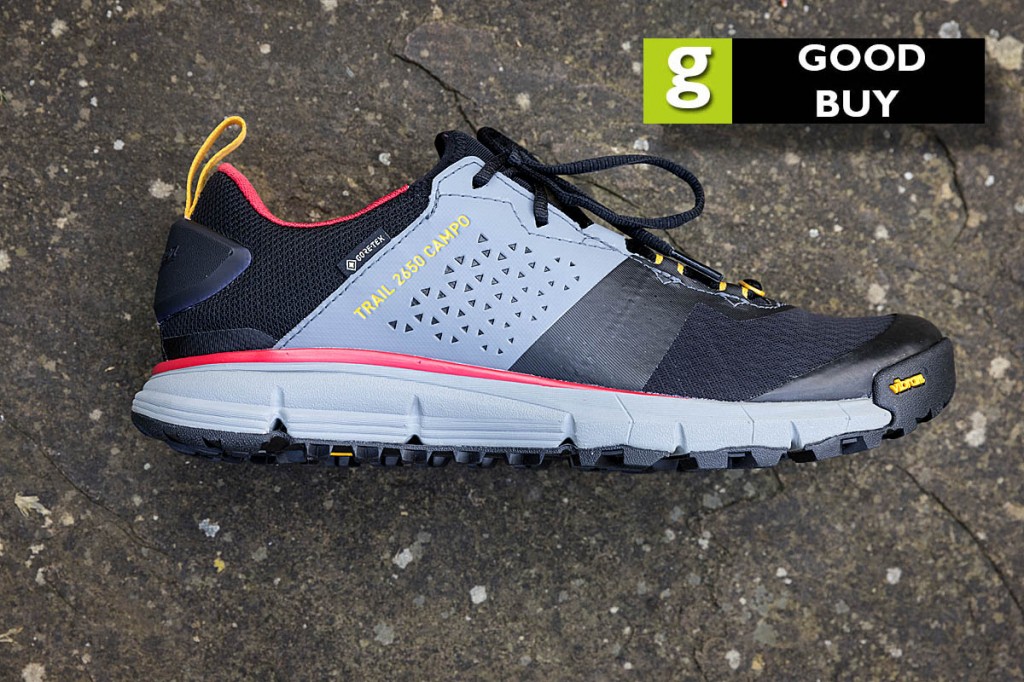Price: £210
Colour: black/grey/red
Weight: 688g a pair (size 9½)
Construction: leather with textile panels
Country of manufacture: Vietnam
Sole stiffness: 4/10
Heel-to-toe drop: 8mm
Waterproofing: Gore-Tex Invisible Fit
Women’s version: yes
Sizes: men’s 6-13 medium or wide; women’s 3-9 medium
I’ve put the Danner Trail 2650 Campo GTX shoes to an extended test over a period of four months in conditions ranging from cool and wet days to hot summer outings on the hills.
The uppers have side panels of ventilated leather, with pliant, fairly soft fabric completing the design. There’s a Gore-Tex Invisible Fit membrane, bonded directly into the shoe, to provide waterproofing. Gore-Tex says this gives shoes the same feel as a non-membrane model, while retaining the ability to keep out water.
The construction keeps the weight of the Trail 2650 Campo GTX low, with my pair of 9½s tipping the scales at less than 700g for the pair.
The Danner shoe has the brand’s Exo heel counter, a semi-rigid element on the outside of the shoe, to keep the rear of the foot in place while allowing good internal cushioning. The system worked well, giving good stability and no heel-lift on uphill sections of my routes.
There was just the right amount of padding round the ankle section. There’s a webbing loop to help pull the shoe on. This was useful as the Trail 2650 Campo GTX has a snug fitting, sewn-in tongue, so it’s not possible to loosen it when slipping on the shoe. The tongue is nicely elasticated and stretchy and, once your foot is in, it hugs it well, and is comfortable. It also means there’s less chance of water ingress at this point, as it’s sewn in right up to the top of the shoe.
The toe box has a semi-stiffened plastic overlay, and the outsole’s rubber extends upwards at the front to give extra protection from knocks.
The shoes stood up to knocks and abrasions during testing, with no visible signs of wear after plenty of hours trogging across moorland, rocky routes and mud.
Underfoot comfort is provided by, firstly, a removable OrthoLite footbed, which as a good amount of cushioning, particularly at the heel.
The second element is the midsole, Danner’s Plygo model, which uses EVA to provide a medium amount of impact absorption. A stiffening band runs around the perimeter of the rear half of the shoe, and the result is a good blend of cushioning and stability, which was useful on more technical ground. A TPU shank also helped give the shoes a stable feel on more difficult ground.
The outsole is Vibram’s 460, which uses Megagrip compound which provided excellent traction and braking on a variety of terrain, ranging from rock, to grass, mud and gravel. The sole resisted wear well for such a grippy compound, with just a little reduction in tread depth after many miles on the hoof.
Comfort of the Danner shoe was very good. I have a broad forefoot with low volume and the Trail 2650 Campo GTX fitted well. There was no discomfort at the flex point between toes and instep. It has the feel of a lightweight running shoe but provided good stability while walking on rocky and technical ground.
Overall underfoot cushioning is middling, and there was no problem using the shoes over longer distances. The Danner shoe became my footwear of choice on wetter days, with the waterproofing keeping out rain and muddy splashes. One caveat for all shoes rather than boots is: it’s likely rain will get in around the ankle opening as trousers are unlikely to cover this area, unlike a boot with higher ankle section. Fabric footwear can also feel like it’s letting water in when stepping in standing water or on persistently rainy days, compared to a leather boot or shoe, as the material does get wet and therefore feels cooler on the foot, though no water is actually seeping in.
The membrane breathed quite well, though on very warm days the Trail 2650 Campo GTX did feel quite clammy on long walks.
Overall, the Danner Trail 2650 Campo GTX was the kind of outdoor gear I like: put it on and forget about it. There was no discomfort and grip on different surfaces was very good. It doesn’t shout outdoors in its design, so I used the shoes in urban settings on wet days, as well as on the trail and on the hills.
The price is pretty steep and has actually risen a little during the period I tested the shoes, due in part to the weakening value of sterling, but quality and performance of the Danner shoes was very good, and durability is looking good too.
Sizing of the 9½ shoes was true.
Danner and its parent company LaCrosse provides little information on sustainability. Some Danner boots can be ‘recrafted’, ie repaired rather than replaced, but the Trail 2650 Campo GTX isn’t included in the scheme. However, the Danner shoes were good quality and proved durable during testing, so we’ve based our rating on that face.
Best uses: trail walking, hillwalking, urban, everyday.
Performance 34/40
Comfort 27/30
Quality 8/10
Value for money 6/10
Sustainability 5/10
Total score: 80/100
The Trail 2650 Campo GTX shoes were supplied to grough by Danner.



